Marketing Communications
Essential Elements
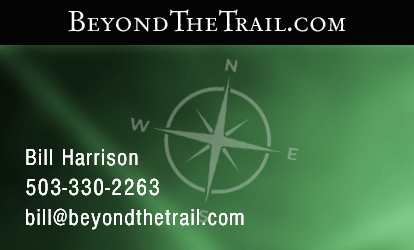
Within the ever-changing business environment, one could look at the marketing communications process as an ongoing journey into the unknown. When traveling beyond the familiar, one might seek out an experienced guide, who can speak the language and knows of hazards along the way.
Creative & Technical Services
quality and innovation for 2023
We offer professional graphic design for the page and the screen, with refined typography and photographic illustration that presents your product within the best light.
Sites are written to be responsive, viewable for both cell phone and desktop computers, with HTML & CSS, that insures stable and reliable code. Our content creation specialties include editing and writing for better product positioning and efficient search engine optimization (SEO).
Responsive Web Design
one site for all screen sizes
Whether building a new site or refining an existing site, we can help you identify the essentials for successful marketing of your products and services over the Internet. We work with you to create a dynamic website that effectively represents your products, is secure, and facilitates an easy purchase process for your customers.
First steps include taking an inventory of your visual and written assets, streamlining the process of turning product information into meaningful content, and verifying the accuracy of key information.
eCommerce: Crisp Photography Sells Products
from teapots to trucks
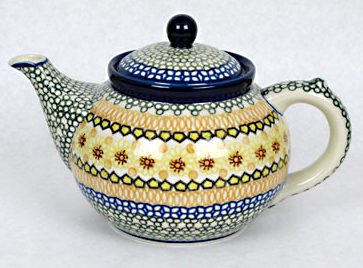
Ceramika Artystyczna Cooperative of Boleslawiec, Poland was established in 1950 to rebuild and continue pottery production that was interrupted by World War II. Through the centuries this region has been valued for the fine white clay found along the basin of the Bóbr and Kwisa rivers.
Good photography will often show aspects that one might miss by examining the physical product. Lighting can accentuate surface texture, control color, illuminate the unique shape, illustrate specific features, and build visual interest.
Disciplined graphic design optimizes user navigation, reduces distraction, and keeps the buyer focused on your product and services. Logical organization and crisp product presentation will aid the purchasing process. Keeping the number of steps in the ordering process to a minimum will maximize sales volume. An easy, interesting and rewarding experience for the buyer will create the incentive for return trips to your site.
Getting the shot is the first half of the process. However, good photography often needs retouching to remove highlights, reflections, or shadows that distract. Each object presents various challenges. The process of retouching, sizing and file prep for uploading to the site needs to be systemized and streamlined for quick and easy production.
Professional Trade Practices
satisfaction guaranteed
The project is not finished until it has your enthusiastic approval.
Communicate your unique message
Written specifically for your product or service, for your specific competitive advantages, features & benefits.
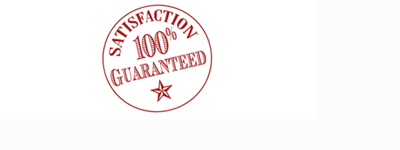
Retrospective Portfolio
Web Design

Polish Pottery Place
Web Site
- Site Design: Bill Harrison

thumbPunch App
Web Site For Customer Loyalty App
- Site Design: Bill Harrison:

South Waterfront Property Development
Web Site
- Site design: Bill Harrison
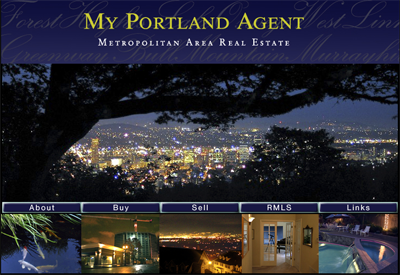
My Portland Agent
Web Site for Local Realtor
- Photography & Site Design: Bill Harrison
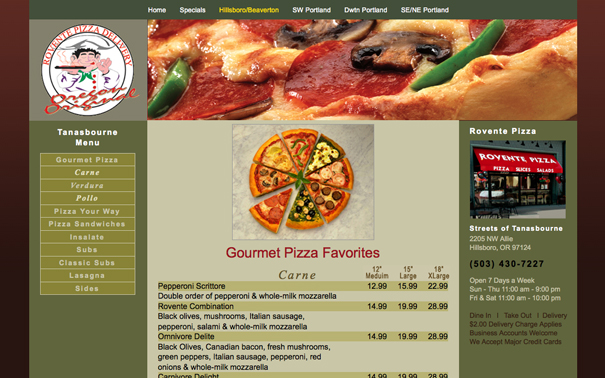
Rovente Pizza
Web Site for Restaurant
- Site Design: Bill Harrison
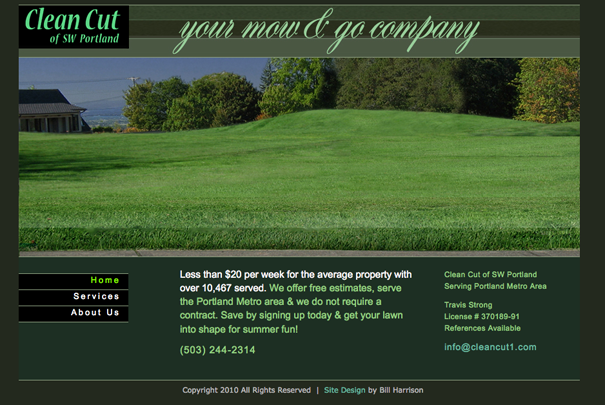
Clean Cut
Web Site
- Site Design: Bill Harrison
MarCom
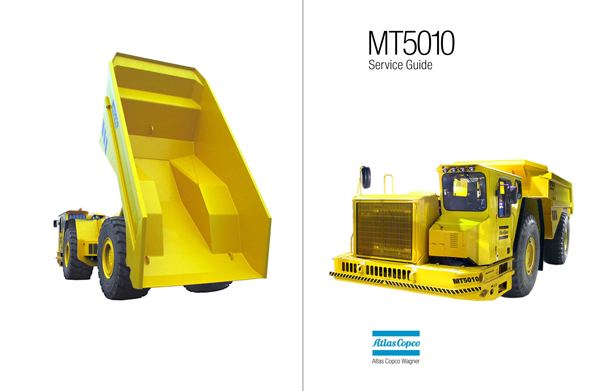
Atlas Copco Wagner
Service Guide for Underground Mine Truck
- Online pdf fully bookmarked & optimized with hierarchical & interactive Table of Contents. Hard-copy was demand printed in color from high resolution files on coated enamel, comb-bound with laminated covers & chapter tabs for longer life in harsh conditions. 84 pages plus cover and tabs.
-
- Photography, Technical Writing & Design: Bill Harrison
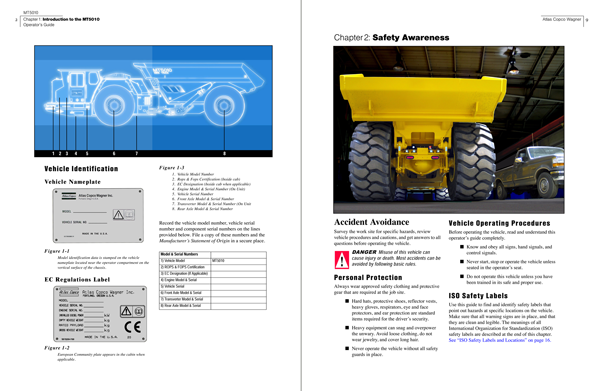
Atlas Copco
Service Manual
- Online pdf fully bookmarked & optimized with hierarchical & interactive Table of Contents. Hard-copy was demand printed in color from high resolution files on coated enamel, comb-bound with laminated covers & chapter tabs for longer life in harsh conditions. 248 pages plus cover and tabs.
-
- Photography, Technical Writing & Design: Bill Harrison
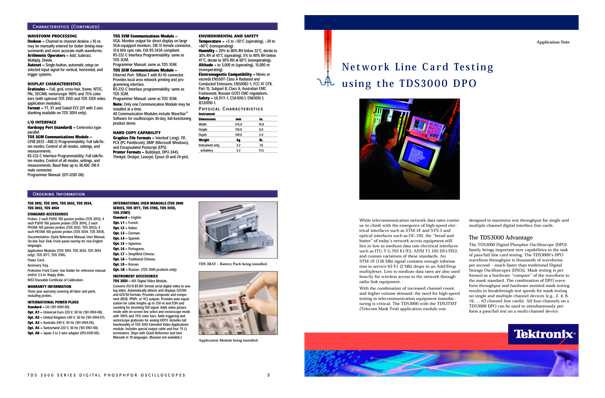
Tektronix
Sales Literature for Product Launch
- Editing & Design: Bill Harrison
Illustration, Design & Production
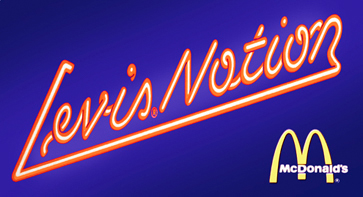
Levi Strauss & McDonald's
Promotional Coupon
- Design & illustration: Bill Harrison
- Art direction: Gary Albertson:
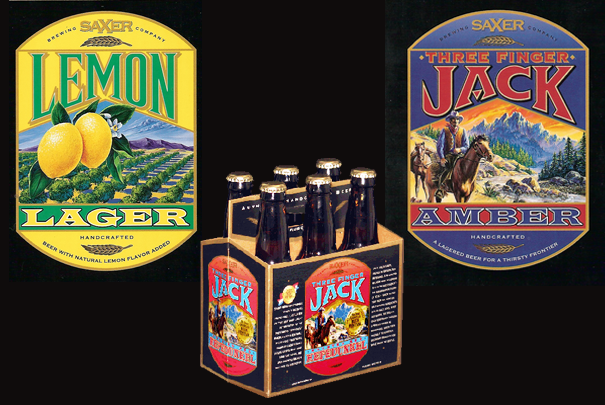
Saxer Brewing
Labels & Packaging
- Typography & Base Art: Bill Harrison
- Art direction: Mark Fristad
- Illustration & illumination: Anton Kimball

Washington Park Zoo
Lithographic Poster
- Creative & Production: Bill Harrison
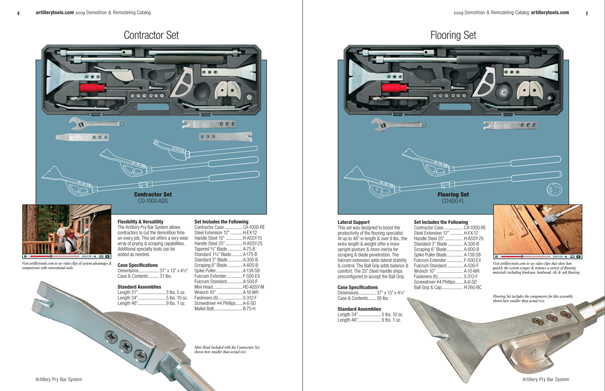
Artillery Tools
Product Catalog
- Online pdf fully bookmarked & optimized with hierarchical & interactive Table of Contents. Hard-copy was printed in color from high resolution files on coated enamel. 12 pages self-cover.
-
- Design, Photography: Bill Harrison
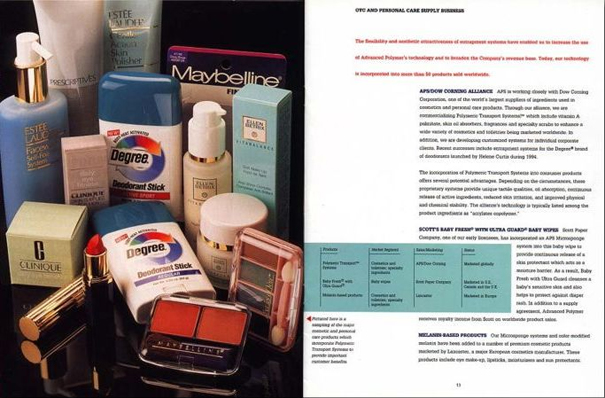
Advanced Polymer Systems
Annual Report
- Design & Production: Bill Harrison
- Art Direction: Thom Smith
Atlas Copco Wagner
Case Study #1: Back Door Marketing

MT5010 Underground Mine Truck. The vehicle weighs about 95,840 lbs and can carry about 110,230. Fully loaded total weight comes in at 206,070 lbs.
In business to business sales, typical marketing strategies are aimed at the front door offices of management and purchasing departments. Marketing, public relations, advertising, sales, and service departments do their best to coordinate activities. But often times, identifying and approaching the end-user within the targeted organization can be difficult.
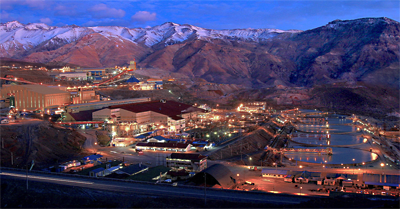
Largest Underground Mine in the World:
El Tiente mine located at 7,500 ft in the Andes Mountains of Chile.
World Wide Back Door Marketing
Reaching the end user has long been the job of the sales team. But often times the sales rep shows up with collateral and web links designed for the front office. End-users have additional perspective, and if their needs are not met, client and vendor lose. End users are expected to keep production flowing and are greatly affected by downtime created by improper use or lack of maintenance. In contrast to the salesman, the service technician arrives in a more casual manner, and sometimes literally through the back door.
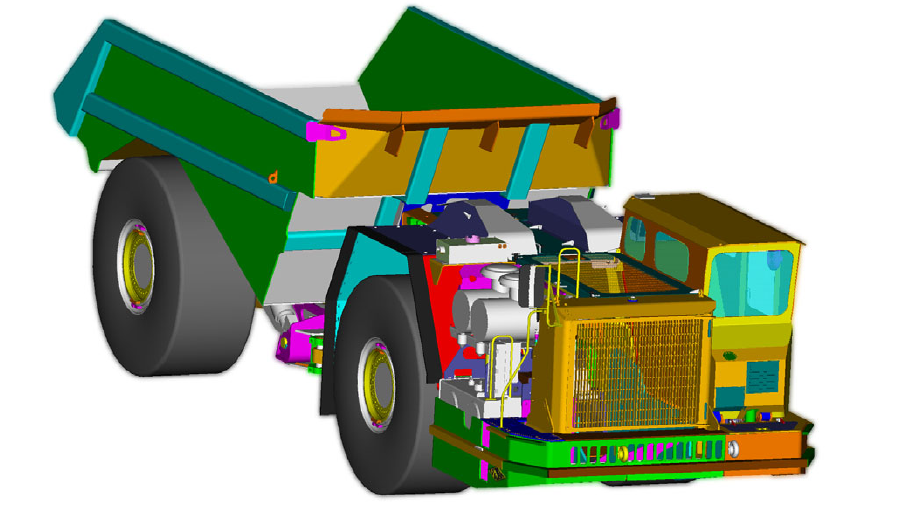
3D Model of MT5010 output from ProE CAD System.
Business-to-Business: Getting Beyond the Front Door
The underground mining industry is characterized by multimillion-dollar capitalizations that operate on minuscule profit margins, where costs are calculated on a per-load basis to within a fraction of a penny. The business environment is treacherous, and so is the environment within the mines, where ambitious workers often push equipment, on harsh terrain, to extreme limits.
Wagner Mining Equipment Company was formed in 1959 in Portland, Oregon and was one of the first to produce specialty vehicles for underground mining. Atlas Copco, a multi billion-dollar corporation with a global sales force, eventually bought the company.
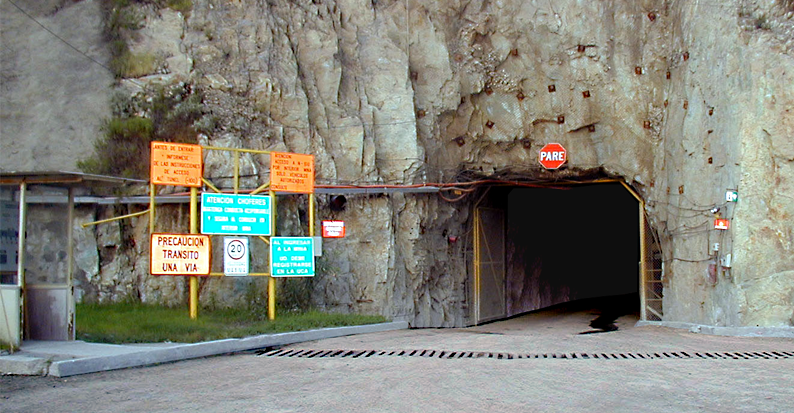
Warning signs at mine entrance in Chile.
The Atlas Copco Wagner vehicles were designed from the ground up to accomplish specialized tasks within the tight confines of an underground mine. Therefore, systems had to share very limited space. ACW designed and manufactured the superstructure of the vehicle and the electro-hydraulic solutions for steering, braking, dumping and hoisting, engineered to maximize performance from power train components supplied by Allison, Caterpillar, Cummins, Detroit Diesel and others.
ACW Service Guides had the task of explaining, to a diverse international audience, procedures for maintaining high performance mechanical, hydraulic and electronic systems, including remote-control automation. The service guides identified the physical location of components, recommended maintenance intervals, described complex maintenance procedures, and explained the theory of operations for many proprietary systems.
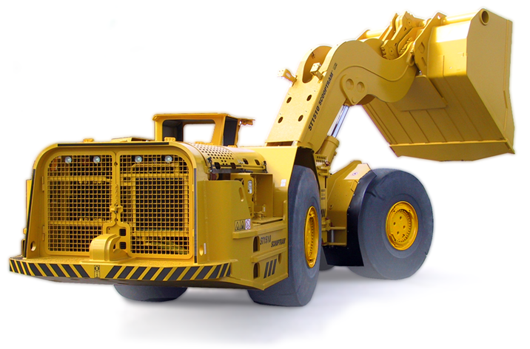
Cumulative Efficiencies
Gradually, through the years, as efficiency in general operations were sought, budget priorities were adjusted for many departments, including the Technical Publishing department, to insure productive use of resources.
However, over the years the vehicles became more complex, with mature electro-hydraulic technologies that were finely honed for decades. As system variables increased, the Service Department began to increase customer assistance, with less dependence on the Service Guide and the Operators' Guide. Gradually, more technicians were hired that could answer questions over the telephone, or in severe cases, hop on an airplane and journey to the mines to see complex problems first hand, a common occurrence in the industrial equipment industry.
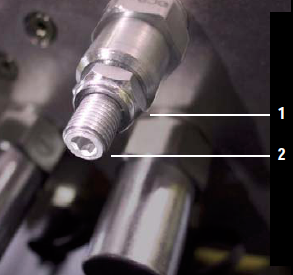
Gaining Consensus in a Conservative Industry
Winning Approval for Change in the mining Industry is not easy. As stated earlier, the mining business environment can be treacherous, as is the environment within the mines, where ambitious workers often push equipment, on harsh terrain, to extreme limits.
Many of the maintenance and service issues that caused downtime on mining vehicles were controllable by mine management... if their service personnel were able to perform routine maintenance efficiently. Unfortunately, the complexity of the vehicles often presented obstacles to even the most seasoned mechanics. The ACW vehicles were probably as good or better than the competition, but the flow of information required to produce accurate and timely documentation needed repair.
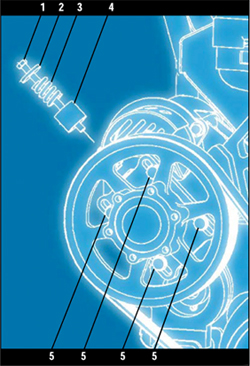
ROI Pre Ordained
Some purchasing agents that bought underground vehicles began to write into contracts that the documentation had to arrive by the time that the vehicle arrived, or they would withhold payment. Wagner's Chief Financial Officer began demanding to know from the Technical Publishing Manager "why a ten dollar disk was holding up payment on a million dollar order".
At that moment, as the newly hired Technical Publishing Manager, I realized how to justify Return on Investment (ROI) for the new computer workstations, for the new software, for the new digital camera, and for the upgrade to color printing that was necessary for accurate and timely support of the vehicles.
With many manufacturers of industrial equipment, the typical procedure for purchasing new office equipment or increasing cost of technical communications included submission of a detailed proposal, complete with an ROI analysis based upon the company's current internal rate of return (IRR). The Director of Engineering would compare it to his stack of other proposals, and then submit the best to the executive committee, and they would fund those projects with the greatest return to stockholders.
But in this case, the ROI had already been calculated by the CFO when he had asked why a ten-dollar disk was holding up a million-dollar order. So it was not only about ROI, it was also about making the right decisions for the company.
Writer's Alchemy: Turning Words into Gold
Recent advances in digital photography and in color laser printing on enameled papers combined to make short-run, on-demand printing production feasible and cost effective.
>However, without a doubt, calculating the ROI of the printing project was easier than dealing with the preconceptions shared by many about the role of service manuals, and the way a service manual should look. Initial reaction to the new, shiny, light and bright color version of the books included ridicule and rejection.
To expedite updating the technical content and the design of the manual, input was sought out from many internal and external sources. Initially, some gatekeepers felt threatened, and resisted the process. But after talking with the Marketing, Sales, Order Entry, Purchasing, Parts, Service, and Engineering departments, ACW international sales companies, and many customers, content in the books was revised. All participants received respect and feedback and a sense of involvement, especially customer mechanics at mines that had service issues.
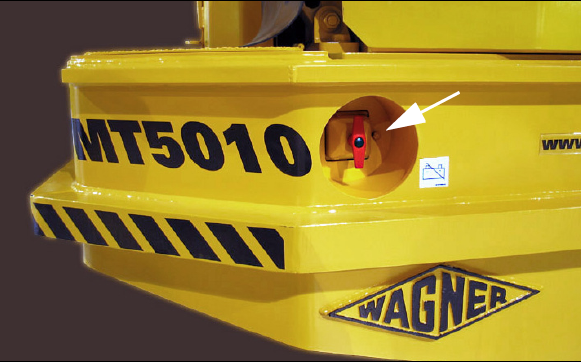
Detailed instructions for worker safety; Turn the master switch to the left to shut off all electricity, Tturn to the right to reconnect after servicing the vehicle.
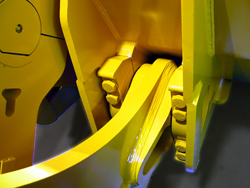
Preparing for World Wide Distribution
Spiral bound color copies of the books were produced and presented to executives and department heads at a meeting that included the CFO and the President of the company.
Everyone in the room agreed, after comparing the old book with the new book, that obviously the reductions in the service technicians' trips to fix mechanical problems at remote mining operations would more than offset the cost.
The hardcopy version was printed at high resolution, laminated for durability and indexed with tabs for easy access to over 200 pages. Each page contained color photos, diagrams and specific technical content.
The online version was a fully bookmarked Acrobat PDF. With one click, the linked hierarchical table of contents would take the user directly to the pages that contained the selected subject matter. The file was optimized for the smallest file size that retained sufficient resolution for online use.
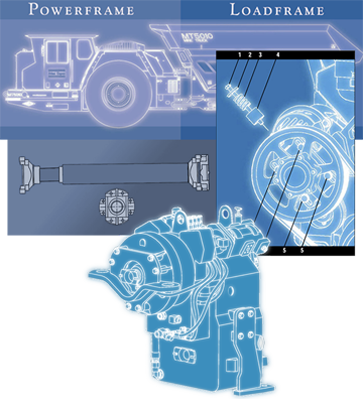
Atlas Copco
Technical Graphics for Service Manual
- Photoshop Styling of CAD Images: Bill Harrison
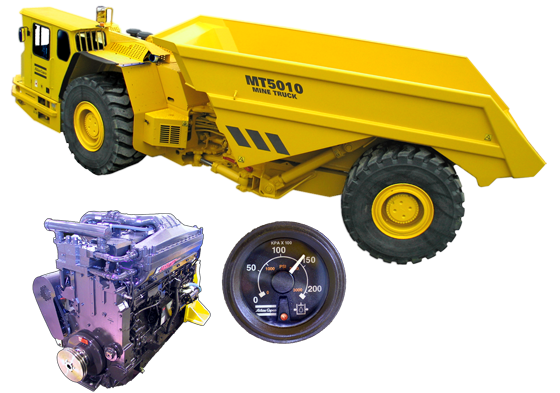
Atlas Copco
Technical Graphics
- Photography & Retouching: Bill Harrison
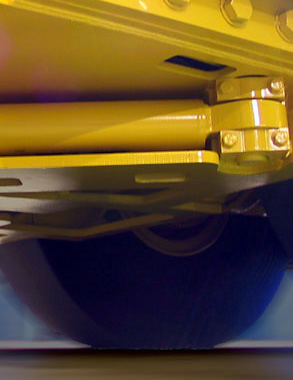
Rapid Response From the Market
The senior sales engineer for large trucks requested a set of the new ACW Service & Operators Guides before he departed for northern Canada. The books helped him to close a sale on several new vehicles, worth over a million dollars in gross revenues.
The ACW customer base included the most productive mines in Canada, South America, Europe, Africa, Russia, China, India, and Australia. Throughout the following weeks, the books were instrumental in closing additional sales in Australia and Africa. Enthusiastic requests for books from Atlas Copco sales companies and independent distributors began to come in from all corners of the globe.
Sales reps wanted to use the ACW Service & Operators Guides as a sales closing tool… Mine Managers wanted to use the books for inhouse safety training, and maintenance personnel wanted the books to help them repair and service the vehicles.
Wieden+Kennedy
Case Study #2: Power of Advertising

Recently scanned from the original bumper sticker, which I believe was the first use of the phrase that became associated with Nike world wide.
David Kennedy called one day with a special request... "Pick up a layout for a job, after the type has been set, make sure it matches the layout, and then take it to Peter Moore at Nike." The job looked simple enough. It was for a bumper sticker, all caps, very tight, but not touching, it had a Nike logo and an interesting phrase…
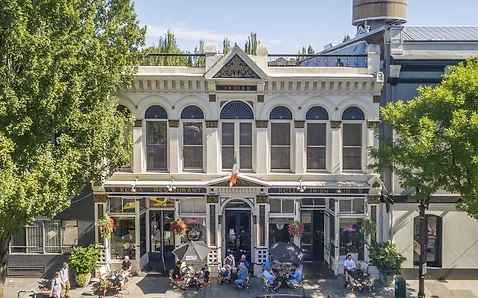
Recollections from the golden days of graphic arts in Portland, Oregon when the streets were clean, relatively safe and beautiful. Kell's Irish Pub, opened in 1990.
Just Do It, From the Beginning
I knew a lot of people in town, but the people I knew at Wieden+Kennedy were very busy creating award winning work. However, I was able to place a set of our typeface catalogs in the W+K print production room. For over a year I updated those books twice a month, before we set one line of type for W+K.
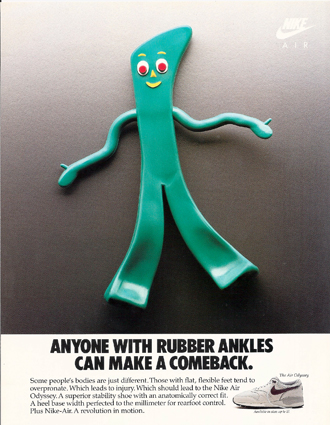
A new art director, David Jenkins, had arrived. David had been creative director and vice president at Ogilvy & Mather in both New York and San Francisco, and things in Portland had not been moving fast enough for him, until one summer morning. I was in the W+K production room updating our typeface catalog and David was talking on the phone to our noble competitor. He was trying to submit some alterations for a Nike ad, but they were taking too long to find his layout. When he hung up, I asked if we could do anything to help.
I assured David that we would not lose his layout, that I would take personal responsibility for completing his work, that if he didn't like the typography we would change it to his preferences, that yes we could get it done before 5:00 pm in time for the FedEx courier.

Schlegel typesetting was one of the first tradeshops to install high quality digital composition. And Michael Preive at W+K was one of the first to use the new capability for distorting letterforms. As I recall, this art was used for a large outdoor billboard.
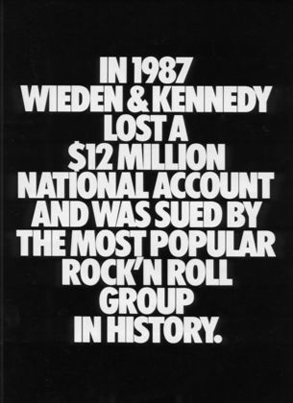
Expertise & Willingness to Help A Client
That afternoon we did what once was impossible. We had our best typographer handset the headline on the Typositor. The body copy for the ad was set on our new Quadex system, and I hand delivered the galleys to David in his office at the Dekum building. We had done our best but he didn't like the letter spacing. He had specified 'tight but not touching', but the setting was too tight for him. We re-set the job and re-delivered it to him in time for the fed ex pick-up that evening.
At that time, there were about a dozen trade shops in the USA that were capable of producing highly refined typography, but very few were willing to "turn and burn" to make client adjustments within that time frame. We had the new system, we had patient typographers that had spent several months refining the "machine set" original tracking tables as supplied by the manufacturer, and we had the willingness to help a client that was known for producing good work.
With a minor adjustment to our custom table for Palatino, we were able to produce what he was looking for. On that day W+K became one of our toughest, most demanding, most loyal clients. Eventually the typography we completed for W+K would include the original settings for the Bo Jackson and Air Jordan ad campaigns that re-ignited Nike sales.
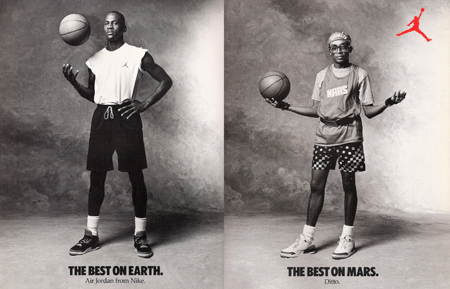
Michael Jordan as the best on earth, and Spike Lee as Mars Blackmon, his alter ego and character from his 1986 film "She's Gotta Have It".
Editing Copy to Fit the Layout
To expedite production, David Jenkins would walk down the hall and grab the appropriate copywriter to edit ads when he was not pleased with the wrap. He did not like the distraction of hyphens, and often demanded that the ad be rewritten to avoid them. I would patiently wait while the bravely focused writer rewrote well-honed prose into award-winning prose that fit the layout.
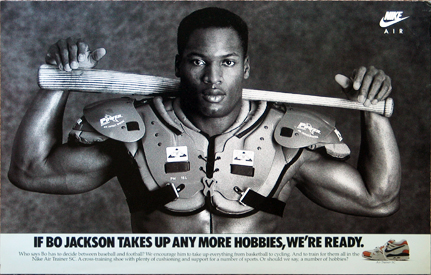
The Legendary Bo Jackson, Heisman Trophy winner and the first athlete to be named an All-Star in two major American sports, looks at ease with football and baseball gear.
About the Power of Advertising
Several years later, when I was in David Jenkins' office to pick up layouts for a series of ads, he began to talk about advertising in a philosophical manner. He was wearing the usual blue jeans, but had a black tuxedo draped over the back of a chair. He wanted me there early so he would have time to explain the job and then drive to pdx to catch a flight. As he went about changing some details on the layout, he seemed a bit preoccupied, but wanted someone to listen.
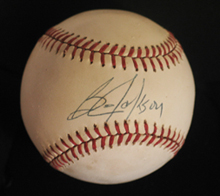
"Bill, just imagine the power, the sheer power of advertising to change peoples lives. One of our interns recently did this ad for a small hole-in-the-wall health-food store. All it said was… "You're not the only one dying for a good hamburger… and it had a picture of a cow. The ad appeared in this downtown shopper tabloid, and the next day the place was jammed with people. Simply amazing.''
The intern had communicated a powerful thought to a targeted audience with a few words and a picture of an animal. With an eye-catching headline, a simple design and the minimal production complexity required for newsprint, she could focus her energies upon the core of her craft and increase the number of customers walking through the front door. Hopefully the owners would be able to meet customer expectations, maintain interest, and manage all the details required for daily operations. Undoubtedly, the ad gave the owners an opportunity for the long-term success that could change their lives for the better.
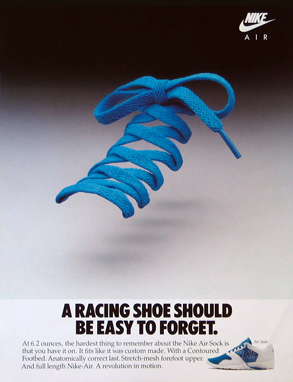
Where the Sucker's Moon
I enjoyed the discussion about the power of advertising, but at the time I wondered what he was up to with the tuxedo and his reflective manner. Several years later, Randall Rothenberg, a writer from the Wall Street Journal, would complete a book about Subaru's choice of W+K as their ad agency,
titled Where the Suckers Moon: The Life and Death of an Advertising Campaign. He would comment on the young man from W+K that was very professional, took his job seriously and wore a Tuxedo during the new business presentation.
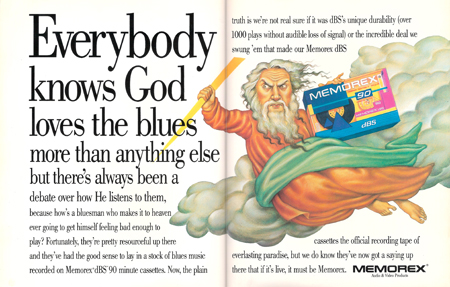
With digital composition at Schelegel Typesetting we were able to match line length and set type into position, based upon a great layout provided by Susan Hoffman at Wieden+Kennedy.
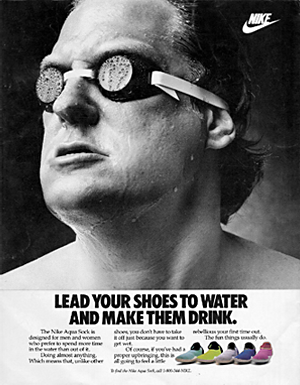
Nike Aqua Sock
Magazine AD
- Typographic Services: Bill Harrison
- Creative: Wieden+Kennedy:
Dramatic Change: A New Era Begins
Eventually typesetting orders began to slow from Intel and Kaiser and Tektronix. I could see that our ability to paginate was migrating down to the personal computer level. The graphic arts technology that we had used to our competitive advantage would soon evolve & destroy the trade shop system.
Before long anyone with a computer would be able to produce typesetting. One talented person would be able to design, write and produce the entire project. There were new technologies on the horizon, new ways of working, new ways of collaborating on projects.
As I went on to pursue other interests with technical writing and the internet, I would often think back to those days when handcrafted pages were produced by men and women that truly understood the essentials of tracking, kerning, pressure, focus, collaboration, and the power of advertisng to change lives.








































